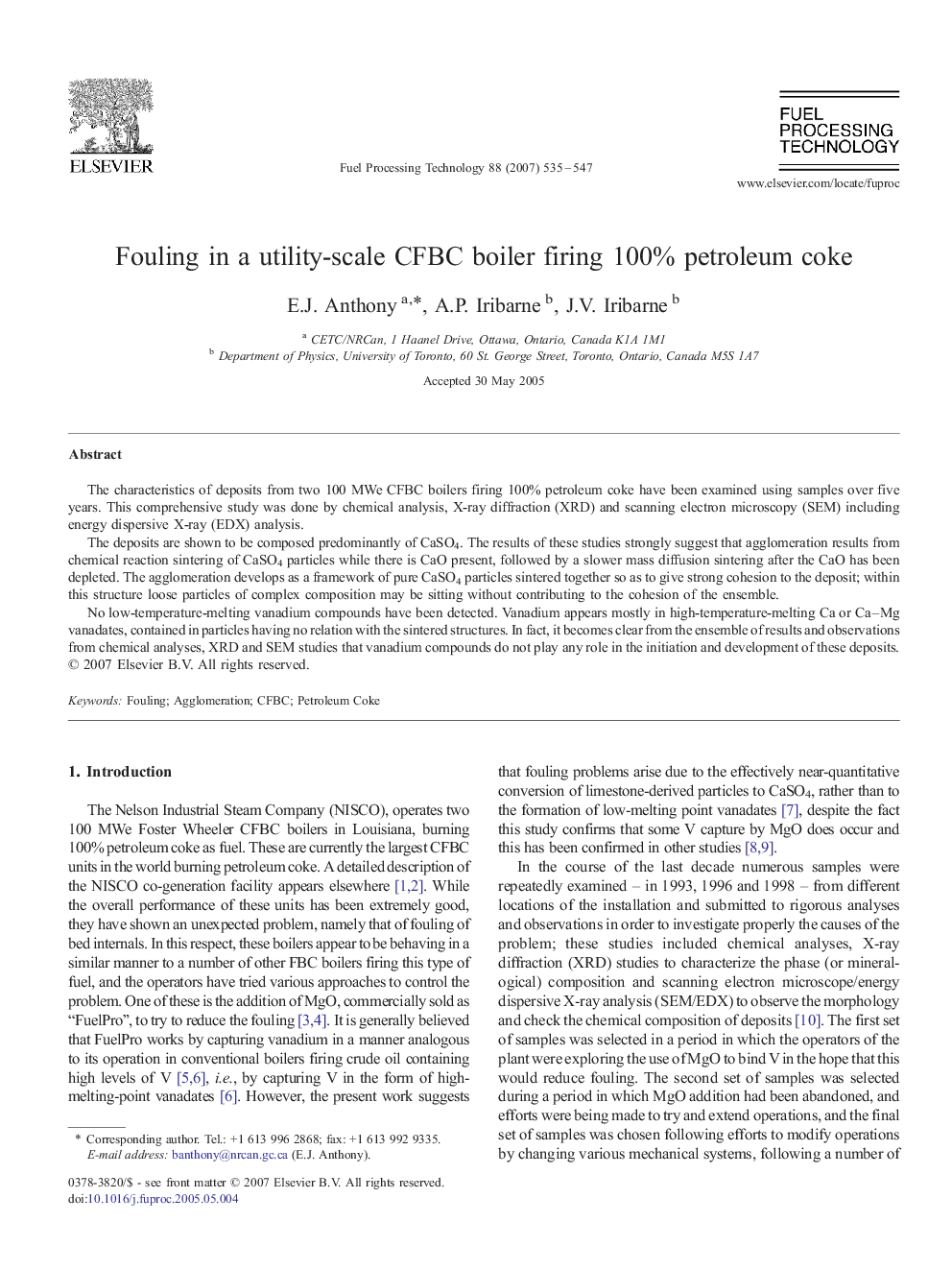| Article ID | Journal | Published Year | Pages | File Type |
|---|---|---|---|---|
| 211111 | Fuel Processing Technology | 2007 | 13 Pages |
The characteristics of deposits from two 100 MWe CFBC boilers firing 100% petroleum coke have been examined using samples over five years. This comprehensive study was done by chemical analysis, X-ray diffraction (XRD) and scanning electron microscopy (SEM) including energy dispersive X-ray (EDX) analysis.The deposits are shown to be composed predominantly of CaSO4. The results of these studies strongly suggest that agglomeration results from chemical reaction sintering of CaSO4 particles while there is CaO present, followed by a slower mass diffusion sintering after the CaO has been depleted. The agglomeration develops as a framework of pure CaSO4 particles sintered together so as to give strong cohesion to the deposit; within this structure loose particles of complex composition may be sitting without contributing to the cohesion of the ensemble.No low-temperature-melting vanadium compounds have been detected. Vanadium appears mostly in high-temperature-melting Ca or Ca–Mg vanadates, contained in particles having no relation with the sintered structures. In fact, it becomes clear from the ensemble of results and observations from chemical analyses, XRD and SEM studies that vanadium compounds do not play any role in the initiation and development of these deposits.
